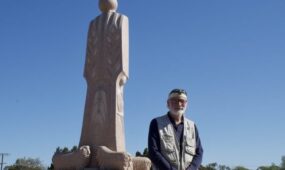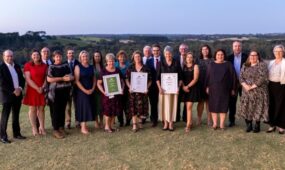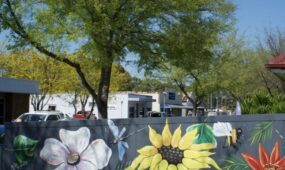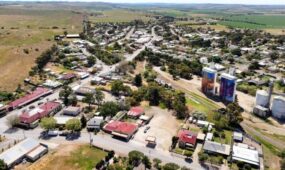Wolf Blass life and legend comes to Hahndorf
Regional
Recognised by his trademark bow tie, legendary winemaker Wolf Blass has a new venture, one that has taken him to the Adelaide Hills town of Hahndorf.

Sign up to receive notifications about new stories in this category.
Thank you for subscribing to story notifications.
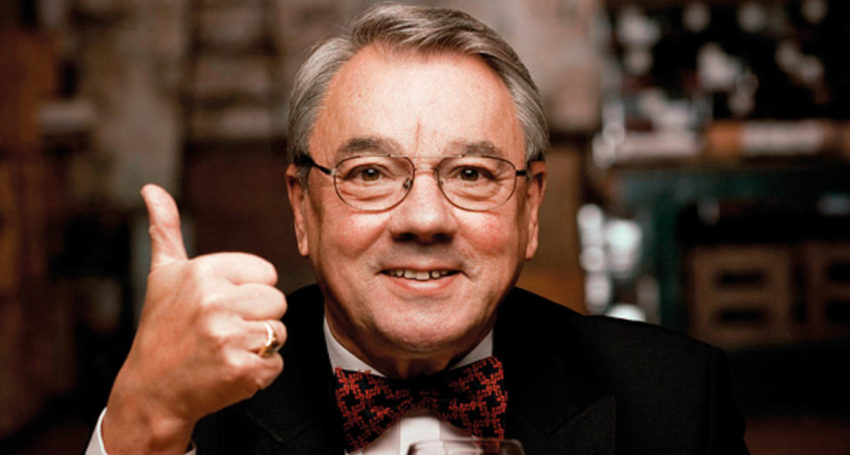
The German-born wine industry icon’s achievements are on show at the recently opened Wolf Blass gallery and museum in the old German town’s main street.
The attraction has been open to the public for only two weeks but is already luring scores of tourists, wine lovers and locals.
“It has been an emotional thing,” says Wolf, referring to the three-year project that has seen decades of memorabilia, photographs and artefacts relocated from their home in the Barossa Valley.
“Now we have something very modern with a touch of history.”
The gallery and museum, owned and operated by the Wolf Blass Foundation, has been developed in the old BankSA building in Hahndorf’s main street.
Contained within the building is the town’s original schoolhouse built in 1854 and now hosting a Cooperage display.
Many of Wolf’s personal achievements and milestones are contained within a collection of 73 scrapbooks featuring newspaper clippings, photos, and items from past decades.
Among the many prized possessions is the soon-to-be displayed 1865 Melbourne Cup trophy.
Aside from wine, Wolf also has a love for sport.
The 7m long Wolfie’s Horse Bar displays a selection of trophies from his winning horses, while other parts of the building contain cabinets full of other football, cricket and skiing memorabilia.
The gallery and museum stocks a range of wines from a selection of regions, as well as grazing platters, allowing visitors to wander around the exhibits or relax in one of the many sitting areas.
Wolf Blass – full name Wolfgang Franz Otto Blass – is renowned for pioneering wine styles and introducing quality wine to the predominantly beer drinking society that existed in Australia.
Although Wolf Blass Wines’ home is in the Barossa Valley, the 84-year-old was driving through Hahndorf one day with his wife Shirley Nyberg-Blass when they spotted the BankSA building was up for lease.
A few phone calls and handshakes and later the building was sold and set to become the new home of Wolf’s collection of personal memorabilia, originally housed in the Barossa.
Wolf says Shirley was behind much of the interior design, seeking the help of local architect John Ashcroft of BeyondInk.
“I must always thank my wife, she was the instigator,” Wolf says.
“On September 5 we had our first function, a soft opening that was exclusive to Hahndorf and the Adelaide Hills.”
Born in East Germany in 1934, Wolf’s introduction to the Australian wine industry came when he migrated here in 1961 after spending more than a decade working in the European wine industry.
He worked in the Barossa Valley for Kaiser Stuhl as a sparkling wines manager before becoming Australia’s first freelance technical advisor to wine companies across South Australia, earning $2.50 an hour.
In 1966, Wolf registered his business Bilyara, an Aboriginal word meaning ‘eaglehawk’ – a symbol that would go on to mark the winemaker’s brand for decades to come.
His first vintage was 250 dozen, a small fraction of the 50 million Wolf Blass branded bottles eventually sold by 2005.
By the late ’60s Wolf was a manager and winemaker for United Distillers, helping to convert Tolley’s image from a brandy producer into a leading wine icon.
In 1973, the Wolf Blass Wines International company was born, and the man himself was on the way to becoming a household name as he pioneered new wine varieties.
Over the years Wolf Blass has won four prestigious Jimmy Watson trophies, the most highly sought after wine award in the country.
He was the man behind the key word ‘drinkability’ and also engaged more women in wine as alcohol consumption was usually reserved for the working class man.
“In the ‘50s we didn’t drink wine we only drank 120 litres of beer. So that has been the biggest social change – to get women involved because they were totally isolated,” Wolf says.
“Six o’clock closing times, all men at the bar, there wasn’t much fun.
“Wine, sparkling wine, pearl wine was part of that change and suddenly there was a bit of life.”
Wolf says he was met with criticism for “shaking the establishment” throughout the early foundations of his career.
“I made wines that could be easily consumed, I was at the time very much criticised because I did things differently,” he says.
“When you consider I came here with $200 in my pocket and how much I have now achieved … it’s giving me a lot of joy.”
The Wolf Blass gallery and museum in Hahndorf is open Thursday – Sunday.
This story was first published by Brand South Australia for the Regional Showcase.
Jump to next article

